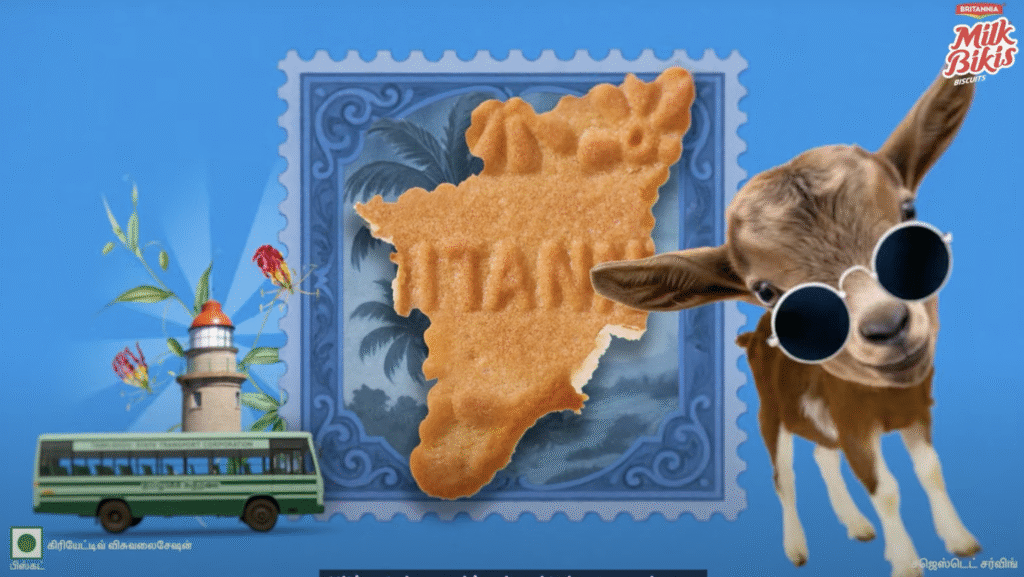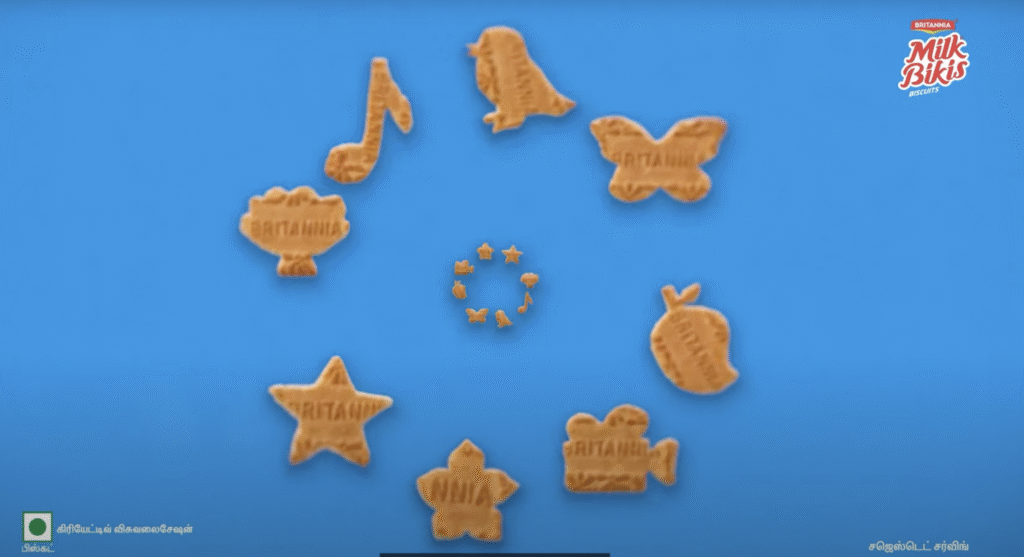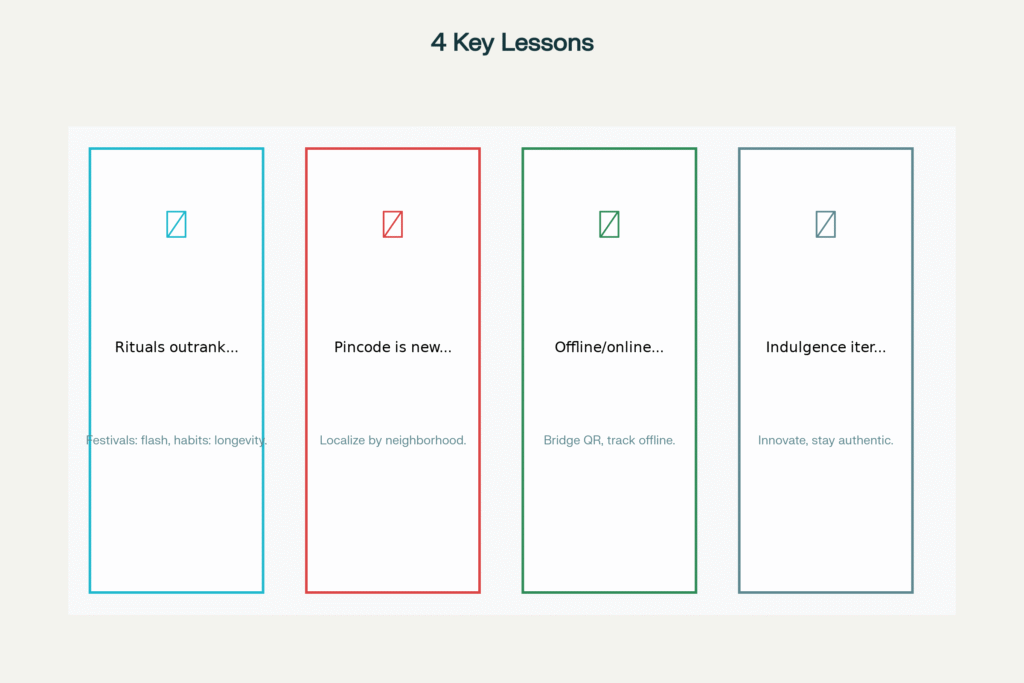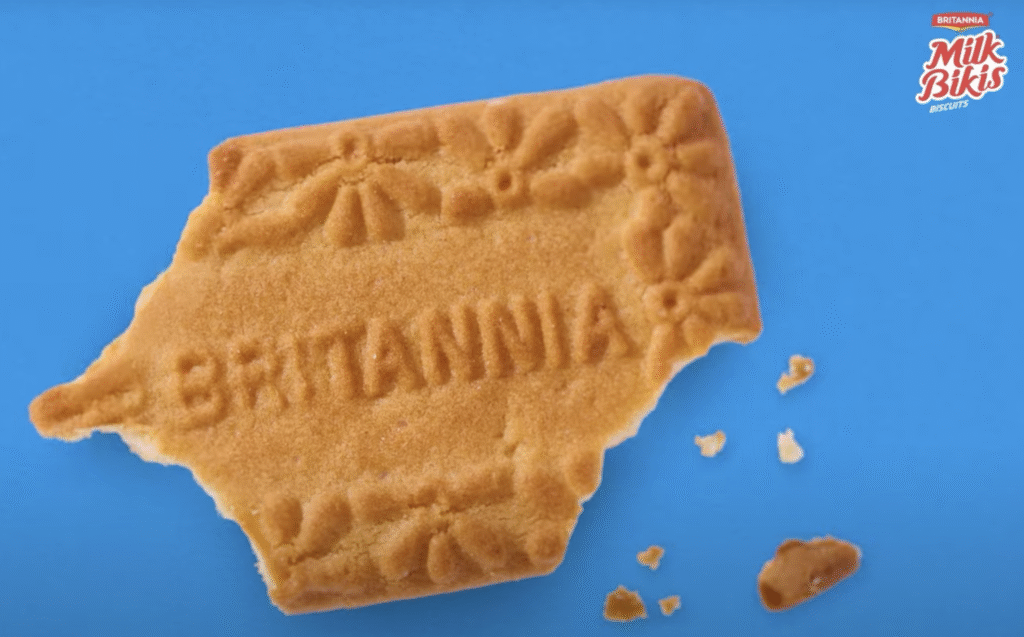How Britannia’s “A Bite of TN” Redefined Hyper-Local Marketing—and What It Means for a Nation of Many Tongues

“Namma Tamil Nadu, one bite at a time.”
— Billboards along the Salem highway, July twenty-twenty-five
In tea stalls tucked between coconut groves and fluorescent-lit mobile shops, Tamil Nadu’s commuters pause, draw a flower-bordered biscuit to their lips, and—almost unconsciously—nibble away the edges before savouring the centre. For decades, marketers ignored this quiet routine. But a simple habit became the centrepiece of something extraordinary in 2025 when Britannia decided to pay attention.
On Tamil Nadu Day, the brand rolled out “A Bite of TN.” Eighty biscuits, sculpted—bitten, in fact—into silhouettes of regional icons: Thalaivar’s sunglasses, Madurai’s jasmine garland, the meandering curve of the Cauvery delta. Overnight, billboards flowered across nineteen districts, functioning less like classic advertisements and more like breadcrumb trails to nearby landmarks.
“Britannia’s wager was simple yet audacious: celebrate a micro-habit to earn macro affection.”
The Art of the Ordinary
Hyper-local campaigns, like regional festivals, risk collapsing under their own specificity. Here, specificity was the strength. By elevating an everyday nibble into pop-culture iconography, Britannia coöperated with culture rather than grafting brand speak onto it.
The payoff was swift. Store managers in Coimbatore reported double-digit lifts in biscuit sales within a fortnight; Metro-rail commuters in Chennai posted more than twelve thousand images of home-made biscuit sculptures.

“It felt like the brand finally spoke our dialect,” said Priya Raman, a twenty-three-year-old design student who spent three evenings perfecting miniature nadaswaram out of Milk Bikis crumbs.

Yet celebration invites scrutiny. The bespoke nature of eighty billboard creatives, each tailored to its pin code, weighed heavily on production budgets—an indulgence possible only for brands with Britannia’s heft. Measurement posed another conundrum: how does one translate roadside wonder into spreadsheet ROI? QR-enabled packs offered directional data, but offline attribution remained hazy at best.
Lessons in the Crumbs
Digital marketing managers, forever torn between scale and soul, can mine four clear take-aways:
First, rituals outrank calendar spikes.
Festivals offer flash, but habits furnish longevity.
Biscuit biting happens thrice a day, festival fireworks only once in a twelve-month cycle.
Second, pin code is the new persona. Tamil Nadu is not a monolith; Tiruchirappalli differs from Tirunelveli in taste, humour, even tea-stall graffiti.
Brands flirting with localisation must court the neighbourhood, not merely the state.
Third, offline must handshake with online. Limited-edition packs carried QR codes that ushered snackers to a contest microsite; footfall sensors could, in future, triangulate billboard exposure with store visits.
Without such bridges, outdoor media remains a romantic yet unprovable fling.
Finally, indulgence demands iteration. Repeat the same biscuit silhouettes next year and the marvellous turns mundane. Britannia’s creative leads whisper about dunk-art—fans dipping biscuits into tea to paint fluid portraits—but novelty must dovetail with authenticity, lest gimmickry creep in.

Replicating the Magic Across a Patchwork Nation
India, a republic of palettes as much as peoples, asks a daunting question: can every state enjoy its own “bite”?

- Kerala offers the evening chaya ritual; imagine banana-chip-shaped biscuits snapped into Kathakali masks, displayed on ferry-side digital screens that sway with the tide.
- Maharashtra rides the local-train heartbeat; station pillars could showcase vada-pav silhouettes punctuated by Marathi quips—“Ek bite, ek station.”
- In Punjab, the frothy moustache of a tall lassi beckons. Sculpt a biscuit into a dhol, cue a Bhangra influencer challenge, and watch Reels explode.
- Gujarat’s Sunday fafda-jalebi brunch yields a kite-shaped crumb; Navratri grounds become living canvases for edible art.
The blueprint remains constant:
one, mine an indigenous food ritual;
two, translate it into a shareable shape;
three, ground the media buy where the ritual lives—be it ferry, metro, or middleware.
A Pan-Indian Crescendo
Hyper-locality, done well, can stitch into a national patchwork rather than fray it.
Britannia’s own roadmap is ambitiously modular. Over eight months, six “bite” chapters would launch in parallel states, each harvesting UGC in its mother-tongue. Come Independence Day, a sixty-second montage could braid those icons into a single “Bite of India” anthem, echoing—but not imitating, previous unity campaigns.
The risk, of course, is tokenism masquerading as tribute. Avoiding it requires what anthropologists call participant observation: marketers must dine at roadside stalls, swap dialect jokes, and, occasionally, accept that some rituals resist commodification.
Cultural vetting, not creative spark, is the guardian against faux pas.
| Hyperlocal Campaigns | Pan-Indian Campaigns | |
| Strengths | – Deep cultural resonance and authenticity – Highly tailored messaging drives strong local engagement – UGC and word-of-mouth amplified through genuine community rituals – Distinct creative that cuts through local clutter | – Broad, consistent brand story unifying a diverse nation – Economies of scale in production and media buying – Easier brand recall on a national scale – Efficient deployment across multiple regions simultaneously |
| Weaknesses | – High production and execution costs per individual market – Scalability challenges; heavy creative and logistical lift – Fragmented messaging can dilute overall brand identity – Complex campaign tracking and measurement | – Risks superficiality—“one-size-fits-all” messaging may lack depth – Limited local emotional connection – May miss regional nuances critical for engagement – Harder to harness local user-generated content organically |
| Opportunities | – Create recurring campaigns centered on local rituals and festivals – Build passionate, loyal micro-communities – Trial innovative formats tailored to local consumer behavior – Generate learnings to inform pan-India approaches | – Rally the nation with a single, powerful theme (e.g., “unity in diversity”) – Launch limited-edition SKUs with national tie-ins – Maximize PR and earned media via nation-wide activations – Integrate with digital platforms at scale |
| Threats | – Risk of exclusion or alienation of other communities – Replication by competitors in underserved markets – Over-personalization may become unsustainable – Cultural missteps can quickly draw backlash | – Can be seen as tone-deaf if missing local sensitivities – Vulnerable to backlash if claiming cultural unity without substance – Stereotyping or oversimplifying regional identities – Lower organic participation from local audiences |
The Road Ahead
Programmatic digital OOH will soon allow billboards in Kochi to morph from Kathakali to Theyyam masks by dusk. Spatial-commerce layers could let commuters scan a poster, summon an AR biscuit, and order a combo-pack before the next traffic-light blink. Vernacular voice AIs will serve snackable ten-second ads in twenty-two Indian languages, each rolling its Rs differently.
Against such technological flourish, the Milk Bikis saga reminds professionals that the most potent insight often lurks in plain sight—inside a flower-bordered biscuit, half-eaten, on a saucer growing cold.
Coda: Where Ritual Meets ROI

Britannia’s “A Bite of TN” made its mark with an estimated three million impressions, but the true triumph was subtler:
“the moment a commuter, mid-nibble, feels their daily habit honoured—not harvested—by a corporate monolith.”
Replicating that takes money, yes, but more importantly, humility:
“the willingness to let consumers write the first line of the campaign, one crumb at a time.”
In a nation as diverse as India, that may be the only scalable strategy left.
Having said everything, I still loved this campaign for the sheer audacity and warmth with which it transformed a humble daily ritual into a unifying, joyful celebration of local identity.
